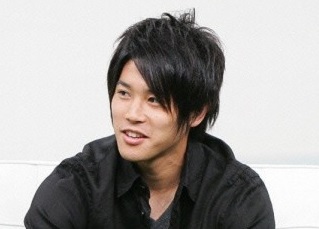オンライン・フォトグラフィー・マガジンF-STOP MAGAZINEに掲載されたTristan Hooperによる展覧会レビュー記事を転載させていただきました。
(日本語訳は最後に記載されています。)
Online photography magazine F-STOP and writer Tristan Hooper kindly let us reprint the exhibition review article.
*************************************************************
Some thoughts on Mushrooms from the forest 2011 by Takashi Homma
Tristan Hooper
During the autumn of 2011, following the catastrophic events of the Great East Japan Earthquake, photographer Takashi Homma explored the forests of Fukushima prefecture. In the midst of the nuclear crisis Homma selected, picked and photographed various species of mushroom that were found to exhibit high levels of radiation and were as a result classified as unsafe by the government.
An exhibition of the photographs entitled Mushrooms from the forest 2011 was hosted by Blind Gallery between December 17th and February 19th, 2012. A book by the same name, containing further images was produced in conjunction with the exhibit.

The newly opened gallery is located in the Yoyogi district of Tokyo, just a few minutes’ walk from the JR station. The venue itself is the definition of bare bones simplicity. Fashioned from what appears to be a recycled shipping container, the narrow yet surprisingly accommodating space places the focus directly on the work displayed and leaves little room for anything else.
The images are framed simply and displayed without captions. The individual mushroom studies, which account for the majority of the exhibition, are juxtaposed with images of the wild and unpopulated woodland environment from which they originated. The various species of mushroom are photographed against a white background; soil and other debris are clearly visible clinging to roots and stems. The different types of fungi are incredibly distinctive. After viewing one or two they begin to resemble portraits. Each mushroom is personified by its individual shape, size and features. Some species appear in pairs, others in larger groups still. These organic subjects look especially foreign photographed in such a sterile environment leading one to make associations with medical study or post mortem examination.
In modern culture and especially ancient civilisation the image of the mushroom is hugely symbolic for a number of reasons. This varied iconography could instigate a number of different interpretations in terms of understanding Homma’s work. It is interesting to note that fungi have long been recipient to a range of conflicting emotional reactions. On one hand they are the fruits of nature, spawned from the ground and picked by many for food but conversely they are often regarded as a sinister, potentially fatal and toxic species.


To some the phallic shape of the mushroom represents fertility, however when viewing Homma’s photographs perhaps the most obvious association can be drawn from the fact that the typical mushroom shape is ubiquitous with the cloud form produced by an atomic explosion. Referred to simply as a ‘mushroom cloud’, this image has been and continues to be the subject of endless recontextualization and can be seen appropriated within advertising, animation, protest imagery and political propaganda. Indeed, this atomic association is in keeping with the works somewhat nuclear premise. The atomic explosion is the result of man’s destructive application of nuclear power whilst the contamination of Homma’s mushrooms is partly a consequence of man’s utilisation of nuclear power for energy.
Homma picked the mushrooms and photographed them on site within the forest using a portable studio. The strategy of extracting the specimens from their natural habitat and relocating them inside a white, clinical environment seems to reassert and punctuate the concept of man’s potential influence and power over nature.
Mushrooms from the forest is another example of a relatively recent shift in Takashi Homma’s practice. His previous work is notable in its depiction of modern Tokyo suburbia and its young inhabitants. Lately however his focus has been more directed toward nature.
In comparison to the great glut of imagery produced in response to the tragic disaster of 2011 and the subsequent nuclear crisis, Homma’s work is muted and quietly suggestive. When studying the mushroom photographs it is easy to be drawn in by the intricacy and strange beauty of nature’s design but if one considers these images in terms of their contextual significance it becomes more apparent that this is a body of work that is loaded with implication.
壊滅的被害を与えた東日本大震災後の2011年秋、写真家のホンマタカシは福島県の森を
訪れた。放射能被害のさなか、ホンマは様々な種類のきのこを見つけ写真におさめた。
そのきのこたちは放射能を吸収し、結果として政府から採取が禁止された。
展覧会が行われたのは代々木ヴィレッジ内にあるblind gallery。作品を展示する以外に
ほとんどスペースは残らないほど細長くコンパクトだが心地よいスペースである。
作品はシンプルに額装されキャプションはない。さまざまな種類のきのこが、土くずは
ついたままだが、白バックで撮影されている。きのこはそれぞれ信じがたいほどに
独特な形態をしている。
現代社会でも古くからの文明社会でもきのこのイメージは多くの理由によりきわめて
象徴的に扱われてきた。この変化に富んだルックスはホンマの作品を理解する際、
様々な解釈を引き起こす。興味深いことに、きのこは両極端な対立するイメージを
もっている。ひとつは地面や木から採取される自然の恵みとしてであり、
もうひとつは邪悪で中毒性のある生物としてである。
男根の形をしたきのこは繁殖力を象徴するが、ホンマの写真から連想されるイメージ
といえば原子爆弾などによってできる、きのこ雲だろう。その図像は広告や
アニメ、抗議、政治的なプロパガンダなどに使われてきた。原子力による爆発が、
原発という、ある種破壊的でもある原子力の応用結果である一方で、
ホンマが撮影したきのこもそれを映し出しているのである。
ホンマはきのこを発見したその場所で簡易スタジオをつくり撮影を行っている。
きのこをその生息環境から切り離した白い背景の上で撮影する手法は、人間が
自然に及ぼす潜在的な影響やパワーをより強く主張しているようにみえる。
「mushrooms from the forest」はホンマの昨今の作品の変化を示す一例である。
ホンマは過去に東京郊外やそこで育った子供たちを撮影した
重要な作品を残しているが、写真家はより直接的な自然にフォーカスしている。
供給過剰なほどに撮影された震災被害や原発事故の直接的な写真と比較して、ホンマの
作品は無口で暗示的である。きのこの写真について調べれば、自然がつくったこの複雑で
奇妙な美しさをもつ生物に関心を引き寄せられるだろう。だが、ホンマがきのこを
撮影した背景や文脈を含めてこれらの写真を見れば、このシリーズが含蓄と暗示が
こめられた作品だということがより明らかになるはずだ。




















